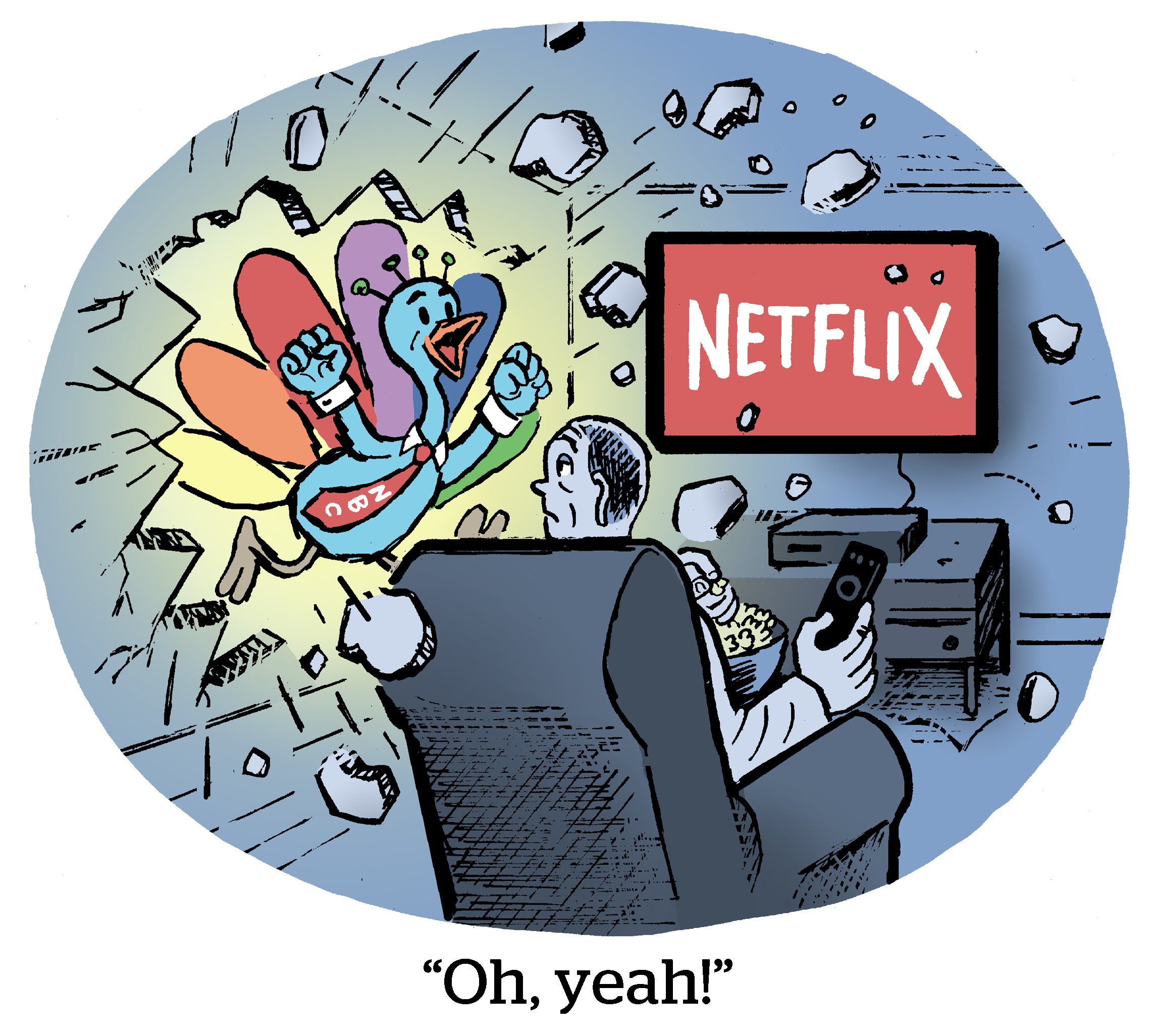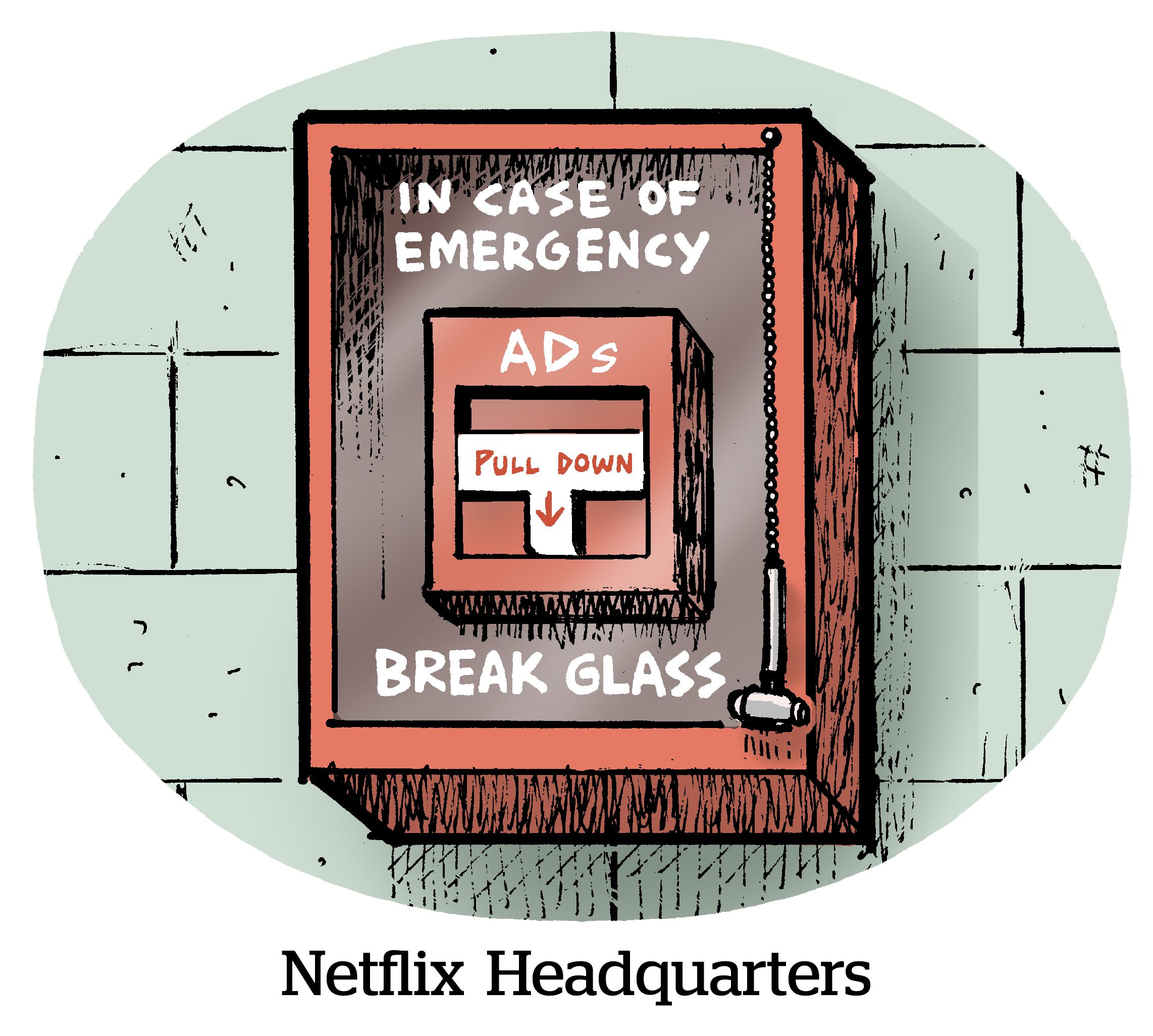CES this year was a petri dish of news and gossip (and hopefully not COVID) among the CTV ad industry just as much as it was a breeding ground for headline-grabbing gadgets and gizmos, like see-through TVs and self-translating ear buds.
The main topics of interest in the advertising sphere (not that Sphere) were the forthcoming launch of Prime Video ads, new streaming ad formats, measurement and programmatic – a continuation of trends that dominated CTV in 2023. (Also overheard: what happened behind the scenes at VideoAmp after the company’s CEO stepped down amid massive layoffs last week.)
The major streamers also flocked to Las Vegas to peacock themselves before brands and agencies (yes, pun intended).
Braving the competition
New entrants to the streaming space are especially under pressure to win market share by impressing buyers.
Netflix, Disney and Amazon all dispatched many of their top ad execs to network and explore potential deals with marketers throughout the week.
Having launched its ad-supported tier just over a year ago, Netflix in particular had a very palpable presence at CES, from physical marketing to panel discussions about upcoming titles. It also shared an update on its global monthly active user count for ads. Disney, meanwhile, held its fourth annual – and first in-person – Tech & Data Showcase, and Amazon also hosted sessions and events with clients.
Which is all well and good, but what streamers need to impress advertisers is scale.
Netflix and Disney+ spent all of last year toiling to attract subscribers to their respective new ad offerings, but both are likely a bit intimidated, to say the least, by Prime Video’s imminent entrance into the AVOD arena.
Rather than incentivizing users to sign up for ads at a lower price point, Amazon is turning ads on by default for Prime Video in a couple of weeks. No doubt, some people will pay more to avoid ads, but at launch the new offering is expected to reach at least 115 million US viewers.
Amazon also made it clear this week that it plans to prioritize Prime Video over its other streaming properties, including free streaming service Freevee (neé IMDb TV).
But Prime Video isn’t exempt from the financial pressure of building a new ads business. On Wednesday, the company released a memo detailing plans to cut hundreds of jobs in its streaming and studio divisions, which include Prime Video, Twitch and MGM Studios.
A measured approach …
On the streaming front, TV measurement was especially hot this week. (When isn’t it, though?)
Buyers are clamoring for measurement technology that includes both advanced audiences and business outcomes. But while “every marketing dollar spent needs to be accounted for, that doesn’t always have to mean a sale,” Mark Wagman, managing director of data and technology at media consultancy MediaLink, told me at CES.
Demand for more advanced measurement overall – such as incremental reach, brand favorability and engagement – is behind the industry’s push for measurement and currency alternatives to Nielsen.
Alt measurement and currency vendors used CES as an opportunity to flaunt updates to their measurement tools, including iSpot, which unveiled upgrades focused on reach and frequency for ads specifically on connected TVs rather than including streaming measurement as an add-on to linear.
TV panel provider HyphaMetrics also announced a partnership with Samba TV to create an audience panel to compete against Nielsen’s (because, apparently, panels are back in style).
The panel will include TV viewing data from Samba, although HyphaMetrics intends to also make its new panel available to other measurement providers such as VideoAmp, iSpot and Comscore. (HyphaMetrics didn’t share an exact timeline for that expansion.)
… with a bit of drama
Speaking of VideoAmp, the company and its recent woes came up in my conversations quite a lot over the past week.
I spoke with several ad execs at CES with knowledge of last week’s layoffs and reorg who echoed what other sources told me on condition of anonymity: VideoAmp burned through too much of the cash it raised while trying to make an unsustainable business model (a combo of activating and measuring ad space) profitable.
According to insiders, VideoAmp has two options to stay alive: Split up the activation and currency business or consider consolidation. (VideoAmp and iSpot have reportedly had talks about a potential merger.)
VideoAmp, which also spoke to me at CES, told me it is, in fact, transitioning more of its resources away from activation and into measurement currency.
In the meantime, VideoAmp’s competitors are busy trying to earn their own place in the alt measurement race.
How would you rate this experience?
Newer ad formats were also a popular discussion topic this week.
Ahead of CES, GroupM launched a new working group with media inventory owners, including Roku and Disney, and CTV ad tech platforms, like BrightLine and KERV, to discuss what advertisers are looking for beyond classic 15- and 30-second spots.
And at CES, Comcast-owned FreeWheel shared an update from the Viewer Experience Lab it unveiled at Cannes last year, which is studying how viewers respond to different ad experiences.
According to the lab’s latest findings, capping ad frequency at two or three exposures per program can positively impact brand recognition and purchase intent.
Also part of the report: Grouping similar creative lengths within a pod increases brand favorability because consistency makes the commercial break feel shorter to viewers. Ad breaks that are two minutes or less also improve brand perception because, well, consumers are actually seeing the ads.
In other words: Serve an ad break longer than two minutes and your target audience is probably in the kitchen, the bathroom or otherwise distracted.
As Comcast Advertising President James Rooke told me at CES this week: “The ad experience shouldn’t be irritating to viewers.”
Preach.
Are you enjoying this newsletter? Let me know what you think. Hit me up at [email protected].
















